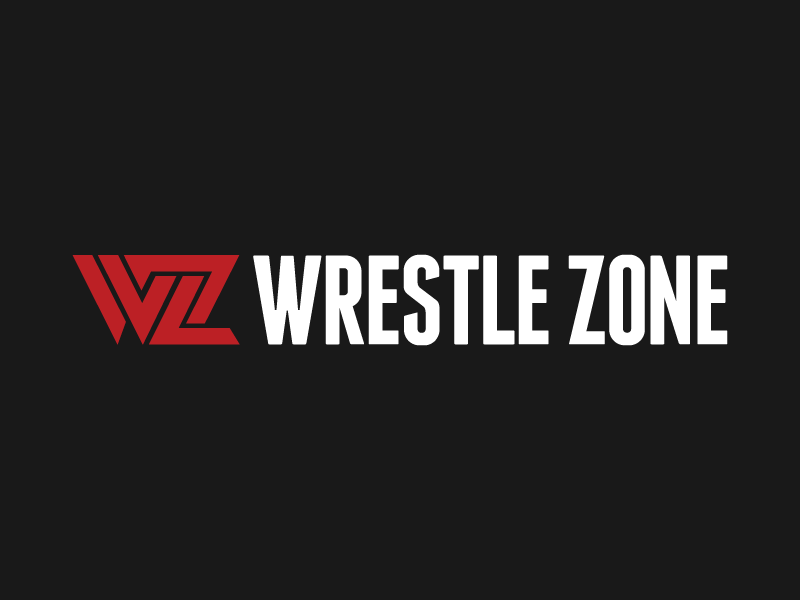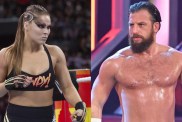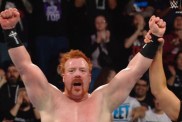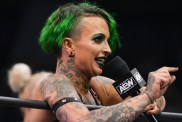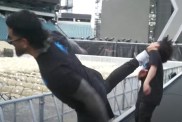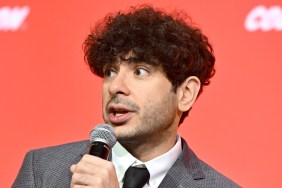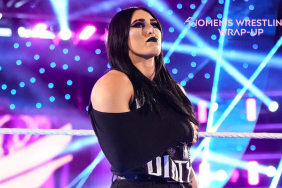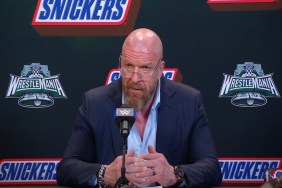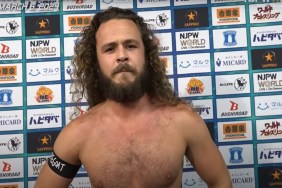Hello everybody, and welcome to another edition of Reading Between The Ropes. There once was a time when the line between a ‘goodie’ and a ‘baddie’ was extremely visible. Characters and gimmicks were very black and white in terms of which side they’d represent; whether they were to be cheered, or whether they were to be booed. Men like Hulk Hogan and the Ultimate Warrior were idolised by millions and were the epitome of the old-fashioned wrestling babyface (‘goodie’). They stood for morality, values and honesty, while heels (‘baddies’) typified all that was immoral, dishonest and down-right dirty, all the while spitting in the face of any sense of values that the good guys had.
However, all that changed during the mid to late 90s when the boundaries between good guys and bad guys suddenly became blurred, and the definitions of what made such a character were no longer black and white, but became grey. You need not look further than one man as a pioneer of such an era – Stone Cold Steve Austin. In fact, you can almost pin-point the moment that the very definitions of babyface and heel began to change in wrestling to the interview Austin gave at the 1996 King of the Ring PPV. Austin’s victory speech blasted a religious Jake the Snake and spawned a quote which would become synonymous with the very successful ‘Attitude’ era of the WWE.
It was at Wrestlemania 13 during a match with Bret “The Hitman” Hart that a signal of the changing tide was well and truly made evident. Hart, a long time fan favourite who stood for all of the values that men like Hogan and Warrior did years previous, suddenly began to garner jeers from a crowd who were heavily swaying towards Steve Austin’s camp. By the end of the match a double-turn had taken place, meaning the alignments of both characters had changed from what they were at the beginning of the contest. Austin went on to become an anti-hero superstar, while Hart switched to the villain.
Around the same time Austin and Hart were engaged in a bitter rivalry, another newcomer had surfaced within the WWE ranks. Rocky Maivia, a man with a wrestling background as a third generation superstar following in his father and grandfather’s footsteps. Maivia came in as the proverbial blue-chipper, just wanting a chance to succeed like his ancestors had. Maivia came in all smiles – shaking hands, kissing babies and everything else that your stereotypical babyface/’goodie’ should do. Back in the 80s and early 90s this might have washed, but it became a sign of the changing wrestling climate that the same fans he was doing his upmost to please were suddenly beginning to boo Maivia.
During a match with Makind at In Your House 15: Cold Day In Hell, Maivia was tortured by fans. Not only were they booing Rocky, not only were they telling Rocky that he “Sucks”, but they were also chanting “Die, Rocky, Die!”. Not to mention the fact that Maivia was squaring off against a man who, at the time, had done nothing to suggest that he deserved their support ahead of this man Maivia. Mankind was the proverbial deranged lunatic who, in generations previous, would never gave won over a crowd against an all-smiling, all-loving, all-round good guy like Maivia. Nonetheless, Maivia was berated by the fans that night, and things were not about to change.
For the weeks that followed signs like “Die, Rocky, Die!” became commonplace around arenas, and chants of the same irk also became more and more audible. The WWE’s plan to promote this man as a babyface had to be altered. They needed a plan B. Much to their credit, the WWE had Rocky quickly acknowledge the fans’ reactions and turn against them in his own right. With a change of moniker to The Rock, and a new attitude, Dwayne Johnson transformed himself from hated face, to much-loved heel. Johnson was so natural as a heel – so charismatic and cocky – that he quickly rose to the top of the ranks alongside Austin. In fact, Johnson was so good at playing the heel that the fans began to cheer for him again.
Johnson’s second run as a face was not the big disappointment that the first outing had turned out to be. He wasn’t the ass-kissing face that was the blue-print for all good guys in the 80s and early 90s, he simply took elements of what made him a successful heel and had endeared himself to the fans at that point, and used them to berate guys that the fans currently disliked. It positioned him in the babyface role, even if the catchphrases used were the same as the ones he had as a bad guy.
So, the WWEs two main guys in the late 90s turned out to be a man who had heel written all over him acting as the top babyface for the company, and the man who started at as the most overt babyface you can imagine finally gaining superstardom as the company’s major heel.
So how does this story link in to today’s wrestling climate? Well the WWE has once again begun to recognise the reactions of the fans. It was the reactions of the fans that made Austin and The Rock switch from heel to face, or vice versa and back again in the mid to late 90. In the case of The Rock it was only a few years ago that he switched alignment from face to heel due to the reactions of the crowds, only to quickly switch back again when those same fans that booed him began to love him again. It seems like the best way to turn face is to turn heel.
Which brings us to John Cena. The case of Cena is very similar to that of The Rock. Coming in to the WWE as a blue-chipper babyface who quickly got stale and had to turn heel. Then, as a cool and cocky heel, fans began to cheer for him again, forcing him to turn babyface. But now he finds himself in the same position The Rock did back in 2002; fans beginning to turn on him in their numbers (remember The Rock’s reception at Summerslam 2002 against Brock Lesnar). Cena and the WWE should take a look at what turning heel did for The Rock. It quickly refreshed his character and reenhanced something he had lost… his ‘cool’ factor. Then, of course, if that works, it’ll probably lead to another face run.
The concept of turning Cena heel is not mind boggling, nor is it a new brain-wave. This column is not about a cry for turning Cena heel. It’s about the fans. Their reactions, and what they have done, and will do for wrestling and it’s superstars. Fans dictate much of what happens to a wrestler’s career, especially now that the WWE are deciding to acknowledge the WWE fans’ reactions again. By the “WWE” I mean commentators and the like who pass comment on matches/superstars/etc. on a regular basis. Even superstars like Cena himself is beginning to recognise his less than stellar receptions from the fans… and nothing is more refreshing.
There may be something more refreshing, however. Perhaps most pleasing is the fact that the WWE have NOT decided to switch Cena heel just yet. Perhaps they intend to usher in an era where grey areas exist even more, and a man stands in neither the white, nor the black zone for an extended period of time. Why turn Cena heel? Why not keep him where he is right now? And that, my friends, is a new concept.
The WWE are beginning to accept that you cannot gloss over these reactions. The WWE have never fully ignored or failed to acknowledge these reactions. However, this time they aren’t calling the fans stupid or the reactions a mere symptom of being in “Bizarro Land”. Oh yes, gone are the days of bizarro land. You cannot simply throw the heel or face playbook at these fans anymore. You cannot simply sway the reactions of these fans on a comment here or an incident there. These fans will boo and cheer for who they want, and it isn’t because they live in bizarro land.
Judging who will gain a positive reaction and who will gain a negative reaction is getting harder and harder. It can change on a weekly basis. In the days of Steve Austin and The Rock, you could simply turn a superstar face or heel based on the reactions of the fans at the time because of their consistency. Nowadays that consistency is beginning to wain. There are more bizarro lands than the WWE initially accredited for. So many, in fact, that it is hard to tell who lives in bizarro land and who doesn’t.
Perhaps this whole idea of such a land existing was a bad idea in the first place? Who came up with it anyway?
Until next time,
Mitchell L. Gadd
